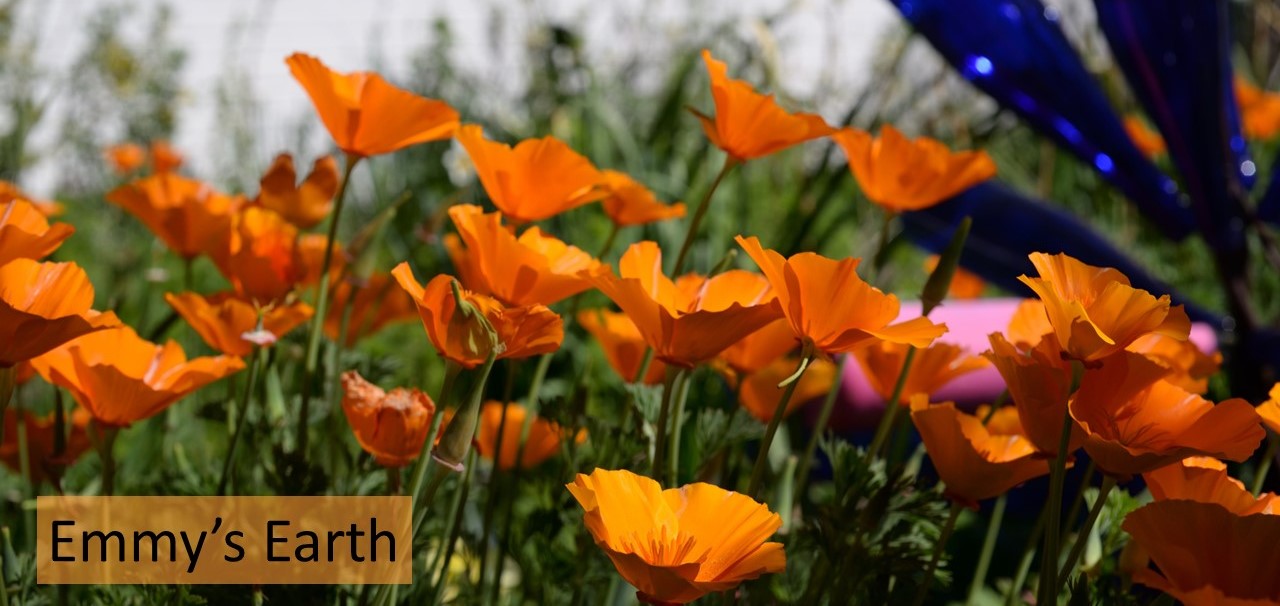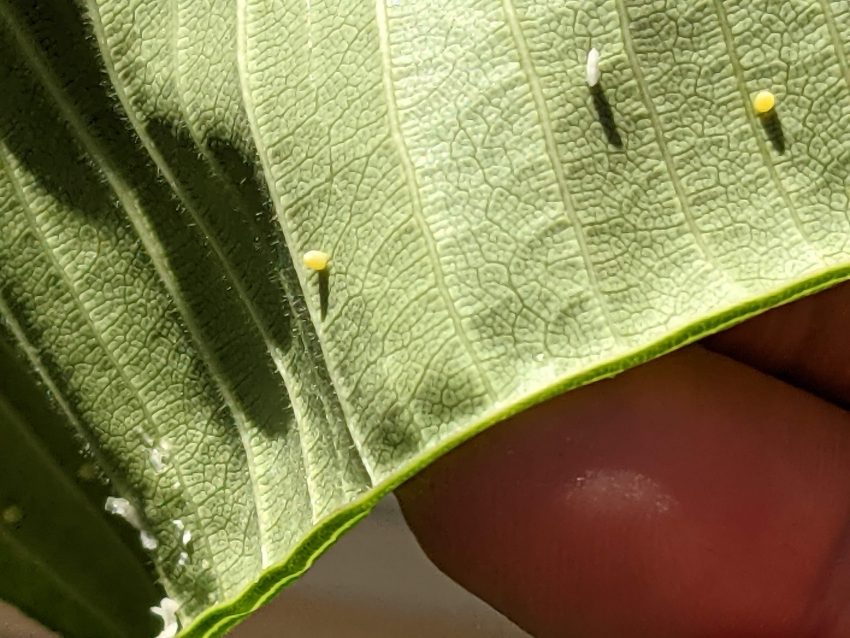Monarchs have been much on my mind lately. It is fall and I live on the western edge of the Monarch Highway. I have tagged Monarchs for Monarch Watch since 1997 but quit buying tags around 2015 when the urban Monarch population became so small. I had the chance to look back at some old Monarch information lately and found a copy of the tagging sheet from 1997. In Fall 1997, in our backyard, my girls and I tagged 188 Monarchs. Now I am lucky if a see a couple of Monarchs a week. I know the “head” reasons for the 90% decrease in the eastern migrating Monarch population, but this week it was the “heart” reasons that spoke to me so strongly. While hanging up wash in my backyard, I noticed a Monarch repeatedly hovering around my Plumeria or frangipani. On closer inspection I could see that it was laying eggs.
Monarchs lay eggs on milkweeds, preferably, native milkweeds, across a large swath of the United States. Milkweeds contain cardiac glycosides which when ingested by the Monarch caterpillar make it unpalatable or poisonous to vertebrate predators. But why on my Plumeria?
It turns out that Plumeria and Asclepias (the genus of Milkweeds) are both members of the same plant family, Apocynaceae or dogbanes. Both plants exude a milky white latex that is a skin irritant. I can only surmise that in the biological wasteland that is the average urban area, the closest that this mama could find to what she needed was my Plumeria. The eggs did not adhere to the leaves and the twenty plus eggs she did lay were lost to the population. My heart cried.


We weep, hopefully on a sister’s or a friends shoulder. Then we dry our tears and face the task at hand that seemed insurmountable.